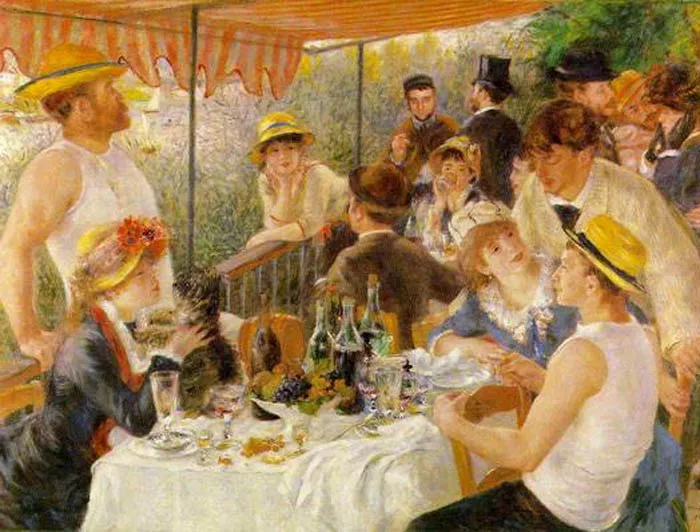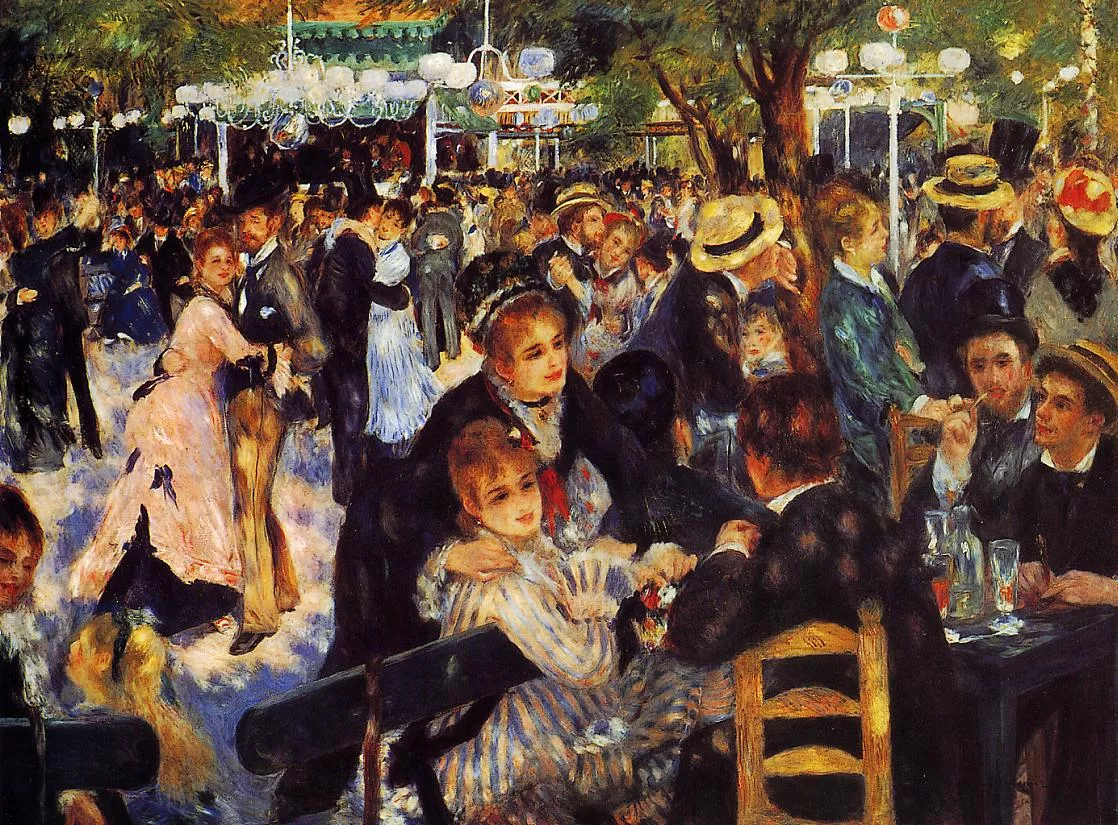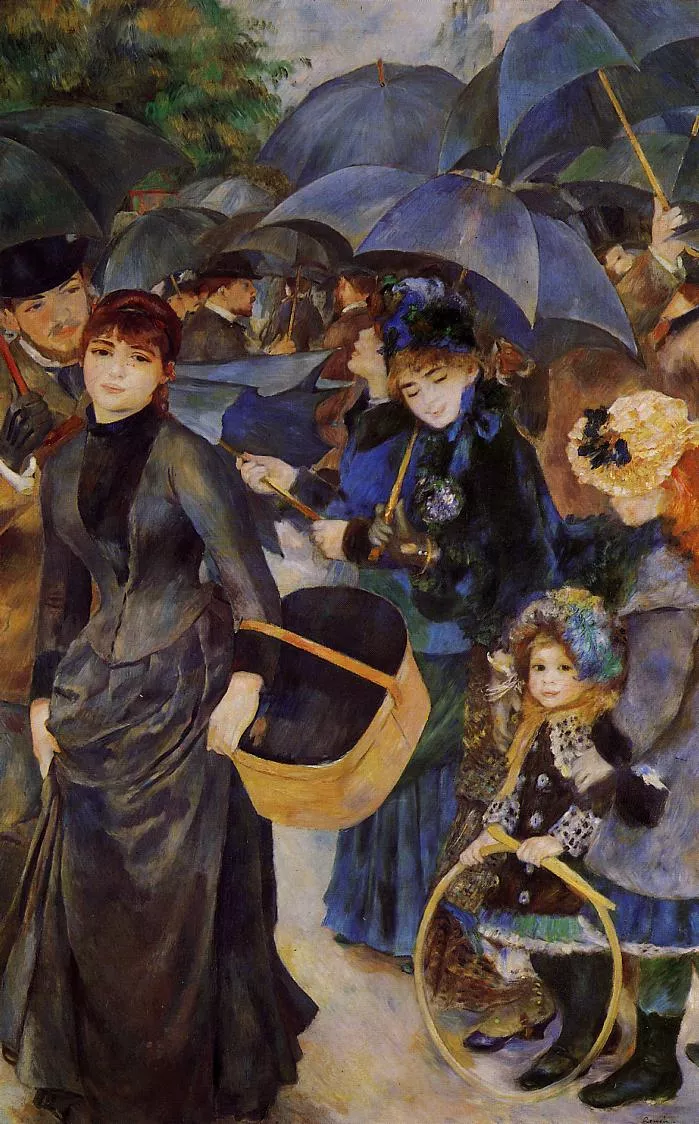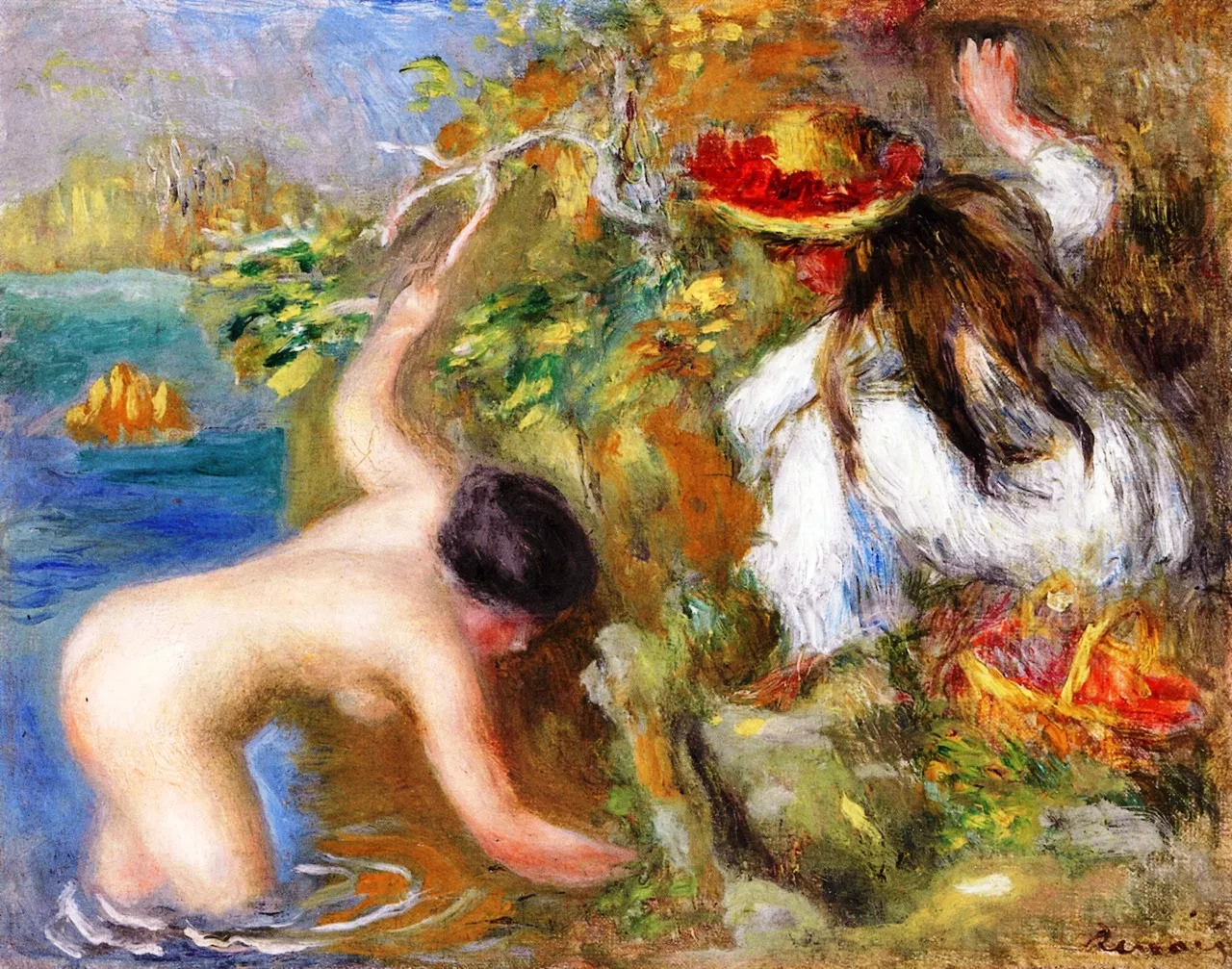Pierre-Auguste Renoir Biography

Pierre-Auguste Renoir (1841-1919) was a French artist and a leading figure in the development of Impressionism. Born in Limoges, France, Renoir's artistic talent was evident from a young age, and he began his career as a porcelain painter before studying art under Charles Gleyre in Paris. Renoir's distinctive style, characterized by amazing colors, loose brushstrokes, and a focus on capturing the beauty of everyday life, helped to define the Impressionist movement. Throughout his career, Renoir produced over 6,000 paintings, including masterpieces such as Luncheon of the Boating Party, Dance at the Moulin de la Galette, and The Umbrellas. Despite struggling with rheumatoid arthritis in his later years, Renoir continued to create art until his death in 1919, leaving behind a vast and influential body of work that continues to inspire and captivate audiences around the world.
Early Life and Education
Pierre-Auguste Renoir was born on February 25, 1841, in Limoges, France, to a working-class family. His father, Léonard Renoir, was a tailor, and his mother, Marguerite Merlet, was a seamstress. In 1844, the family moved to Paris, where Renoir grew up in the Louvre area.
From a young age, Renoir displayed a talent for drawing and singing. At the age of 13, he began working as an apprentice in a porcelain factory, where he learned to paint designs on fine china. This experience would later influence his artistic style, particularly his use of vibrant colors and delicate brushwork.
In 1862, Renoir decided to pursue a career as an artist and enrolled at the École des Beaux-Arts, where he studied under Charles Gleyre. It was here that he met other aspiring artists, including Claude Monet, Alfred Sisley, and Frédéric Bazille, who would become his lifelong friends and collaborators in the development of Impressionism.
The Birth of Impressionism (1860s-1870s)
During the 1860s, Renoir and his fellow artists began to experiment with a new approach to painting that emphasized capturing the fleeting effects of light and color in nature. This style, which would later become known as Impressionism, was a radical departure from the traditional academic style of the time, which focused on historical and mythological subjects and favored precise, detailed brushwork.
Renoir's early works from this period, such as La Grenouillère (1869) and The Dancer (1874), showcase his developing Impressionist style, with their loose, sketchy brushstrokes and bright, luminous colors. These paintings also demonstrate Renoir's interest in depicting modern life and leisure activities, a theme that would remain central to his work throughout his career.
In 1874, Renoir participated in the first Impressionist exhibition, alongside Monet, Sisley, Bazille, and other like-minded artists. The exhibition was met with harsh criticism from the art establishment, who viewed the Impressionists' work as unfinished and lacking in skill. However, Renoir and his colleagues persevered, continuing to develop their style and exhibit their work independently.
Mature Period and Success (1880s-1890s)
In the 1880s, Renoir's style began to evolve, as he sought to introduce more structure and solidity into his paintings. This shift was influenced in part by his admiration for the works of classical masters like Raphael and Ingres, as well as his desire to create art that was more accessible and appealing to a wider audience.
During this period, Renoir produced some of his most famous and beloved works, including Luncheon of the Boating Party (1880-1881), Dance at the Moulin de la Galette (1876), and The Umbrellas (1881-1885). These paintings showcase Renoir's mastery of color, light, and composition, as well as his ability to capture the joy and beauty of everyday moments.
Renoir's success and reputation grew throughout the 1880s and 1890s, and he began to receive major commissions from wealthy patrons and collectors. He also traveled extensively during this time, visiting Italy, Algeria, and Spain, where he was inspired by the local landscapes, cultures, and artistic traditions.
Later Years and Legacy (1900s-1919)
In the early 1900s, Renoir began to suffer from rheumatoid arthritis, a painful condition that made it increasingly difficult for him to paint. Despite this challenge, he continued to work tirelessly, adapting his technique to accommodate his physical limitations. He began to focus more on sculpture during this time, working closely with a young assistant named Richard Guino to create a series of beautiful and expressive works.
Renoir's later paintings, such as The Bathers (1918-1919), are characterized by a softer, more diffused style, with figures that seem to blend into their surroundings. These works reflect Renoir's enduring fascination with the human form and his desire to create art that celebrated the beauty and sensuality of life.
Renoir died on December 3, 1919, at the age of 78. He left behind a vast and influential body of work, comprising over 6,000 paintings, as well as numerous sculptures, drawings, and prints. His legacy as one of the greatest artists of the Impressionist movement continues to inspire and captivate audiences around the world.
Famous Works
Pierre-Auguste Renoir's most celebrated paintings include Luncheon of the Boating Party, Dance at the Moulin de la Galette, The Umbrellas, and The Bathers, which showcase his mastery of color, composition, and his ability to capture the beauty and joy of everyday life in Impressionist style.
Most Famous Pierre-Auguste Renoir Paintings
Luncheon of the Boating Party (1880-1881)
Luncheon of the Boating Party is one of Renoir's most famous and iconic works. The painting depicts a group of Renoir's friends enjoying a leisurely lunch on the balcony of the Maison Fournaise, a popular restaurant on the Seine River. The composition is carefully arranged, with the figures positioned in a way that creates a sense of balance and harmony. Renoir's use of bright, luminous colors and his ability to capture the play of light on the water and the figures' clothing make this painting a masterpiece of Impressionist art.
Dance at the Moulin de la Galette (1876)
Dance at the Moulin de la Galette is another of Renoir's most celebrated works. The painting depicts a lively scene at the Moulin de la Galette, a popular outdoor dance hall in Montmartre. Renoir's use of dappled light and his ability to convey the sense of movement and energy of the dancers make this painting a vivid and engaging portrait of Parisian life in the late 19th century.
The Umbrellas (1881-1885)
The Umbrellas is a beautiful and atmospheric painting that showcases Renoir's mastery of color and composition. The painting depicts a group of people walking through a rainy Parisian street, sheltered beneath a sea of umbrellas. Renoir's use of soft, muted colors and his ability to capture the reflections and shadows cast by the umbrellas create a sense of depth and mystery.
The Bathers (1918-1919)
The Bathers is one of Renoir's last major works, painted in the final years of his life when he was struggling with severe arthritis. The painting depicts a group of nude female figures bathing in a lush, idyllic landscape. Renoir's use of soft, diffused light and his ability to convey the sensuality and beauty of the human form make this painting a powerful and moving testament to his enduring artistic vision.
***
Pierre-Auguste Renoir was a pioneering artist whose work helped to define the Impressionist movement and shape the course of modern art. Through his vibrant, luminous paintings, Renoir sought to capture the beauty and joy of the world around him, from the bustling streets of Paris to the tranquil gardens of the French countryside.
Despite facing numerous challenges throughout his career, including poverty, critical rejection, and debilitating illness, Renoir remained dedicated to his art, constantly seeking new ways to express his vision and connect with his audience. His legacy as one of the greatest painters of the 19th century continues to inspire and influence artists around the world, and his works remain beloved by audiences of all ages and backgrounds.
Today, Renoir's paintings can be found in museums and collections around the globe, from the Louvre in Paris to the Metropolitan Museum of Art in New York. His enduring popularity is a testament to the timeless appeal of his art, which captures the essence of the human experience in all its beauty, complexity, and joy.
As we continue to study and appreciate Renoir's work, we are reminded of the power of art to transcend time and place, to speak to us across the centuries, and to illuminate the world in new and profound ways. Through his paintings, Renoir invites us to see the world through his eyes, to find beauty in the everyday, and to celebrate the enduring human spirit that connects us all.



